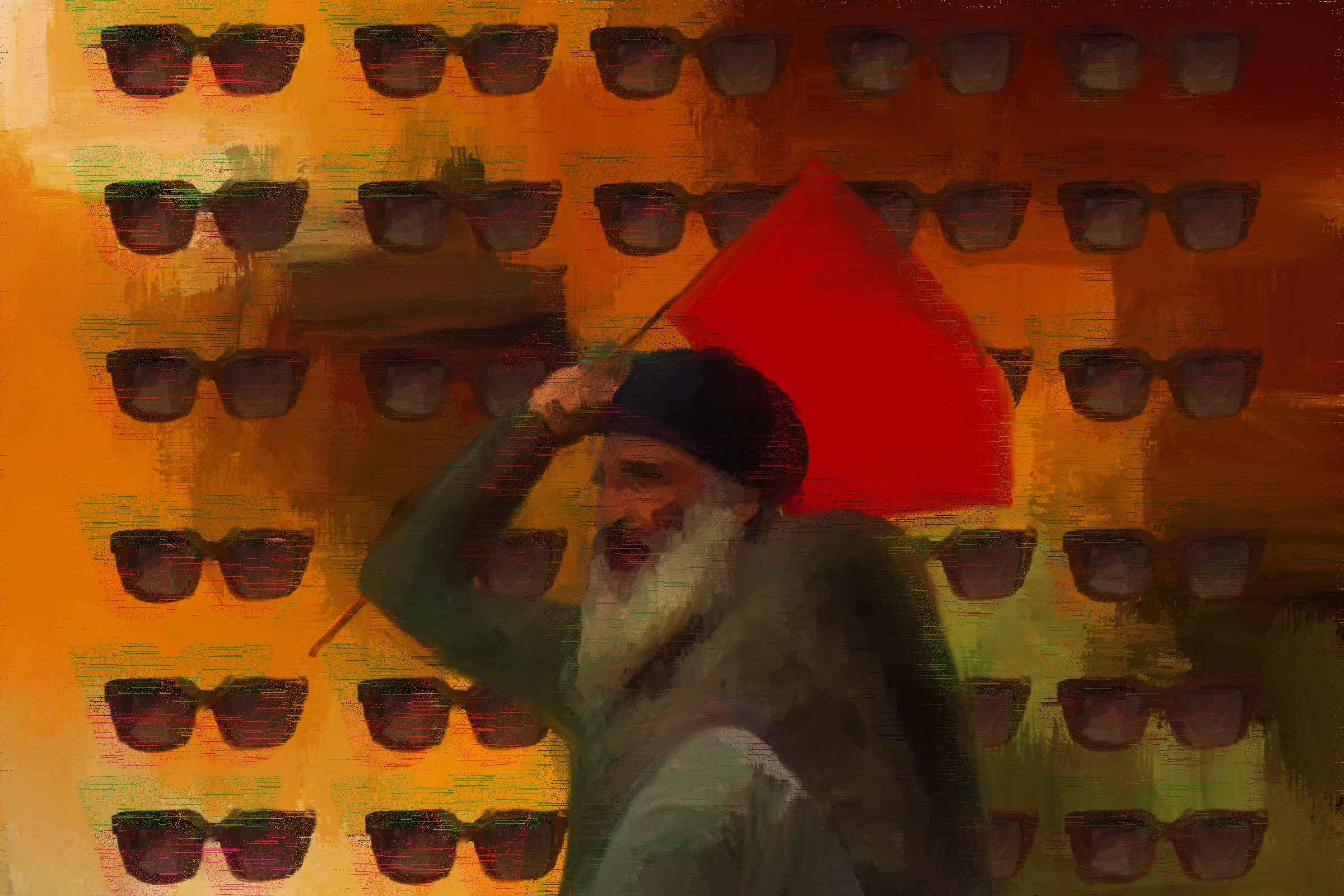As the country wobbled between its post-Republic Day constitutional amnesia and a sentimental reverie on the eve of Martyr’s Day (January 30), we all witnessed unprecedented conflict at the borders of Delhi. The live telecasts vividly aired stone-pelting and vandalism of protest tents, marking “violent clashes” between farmers and a group identifying themselves as ‘locals’ at the Singhu border. The agitated crowd reportedly felt offended by the mounting of a flag on the historic rampart of Red Fort on Republic Day, and claimed their ‘rozi- roti’ is getting affected by the blocking of the national highways. Some of the ‘locals’ were later found to be affiliated with the BJP, from an area 15 km from Singhu.
Our nonchalance would have worked well to ignore such visual narratives of ‘clashes’ that have become part and parcel of India these past few years. Yet, we were shaken and flustered witnessing the violent turn of events. Given what we personally witnessed during repeated visits to Singhu, we feel compelled to share our field-stories. We believe that these stories would perhaps challenge the derogatory portrayals of ‘farmers versus locals’ by a few media platforms.
Before these disruptive episodes punctuated the historic choreography of resistance at the borders, stories of grit, goodwill, strength and solidarity would welcome you to this ephemeral ‘tractor-town’. This site – made up of colorful tents, tarpaulins and shamianas, and constructed over last two months on the national highway – represents the undying resolve of protesting farmers. As we walked and crossed hundreds of tents during our visits, we met young and old, men and women, workers and farmers, supporters and facilitators – all opening up space on their khats for us to sit. While farmers explained the reasons for their firm resistance against the farm laws in these chaupal-like settings, we were moved by their pain and determination.
“Arre, yeh pinni rakh lo (Here, have these sweets),” said one elderly woman, handing over half a dozen of sweets to our well-sanitised hands, adding, “Hum sab ko khilate hai, koi bhukha nahin rehta hai yaha… (We feed everyone, nobody here is with an empty stomach)”. While those pinnis sent from their villages to these farmers braving ‘Dilli ki sardi’ were given away as a token of love and care, we soon realised that we were not the only ones to whom such care was bestowed upon. We in fact, encountered hundreds of ‘locals’ coming and eating at the unending langars of the protest site. Along with them were children, who were busy collecting peanuts, tilpatti and fruits which were given away in the ‘seva’ of those who chose to visit the protesting farmers.
Also read: A Republic of Protest
If the job of satiating hunger for thousands do not seem to be an achievement, then let us also remind you about the existence of knowledge-counters serving food for thought at the protest site. Here, libraries have mushroomed along many of its ‘tarpaulin by-lanes’, offering democratic spaces to unlearn and relearn the histories of struggle and valour. We further came across a makeshift classroom for kids where the children from nearby villages could be seen huddling together around various stacks of books. They could be heard tuning into the rhymes as two volunteers were teaching them using illustrated charts and figures.
As opposed to this, the rhetoric of stately orders coupled with the cut-throat contests around the production of patriotic citizenship, have time and again labelled voices of dissent and rights as enemies of the State. The farmers’ movement thus presents us with the markers for a new politics of protest and dissent. The success of their mobilisation around the binding identity of ‘kisaniyat’ is a key learning for building solidarity across the conventional identities of caste, class, religion and gender. Therefore, amidst a chaotic waft of verbal ultimatums and backlashes regarding the legitimacy of farmers’ protest, lie lessons for the future righteous struggles.
There are multiple lessons to rewrite metaphors to usher in a new era of emancipatory politics. However, India gladly dwells on a post-truth-yuga (if not a kalyuga, as they call it) where the nation never perhaps wants to know, who are the real outlaws and whom the law has flagrantly outcasted from the purview of Constitutional justice. Just a couple of days past the Republic Day, commitment to a better India also pushes us to stand by our fellow citizens, who also happen to be the ones feeding us day in and day out.
The quintessential constitutional argument therefore, should make us ponder over the core ideals of equality, fraternity and liberty rather than being concerned about the shape, size or the colour of the flag flying at the Red Fort. On the contrary, these ideals can be witnessed at Singhu, Tikri, and Ghazipur borders of Delhi as organically emerging testimonials from the ground.
So, next time when you savour the long-grained basmati-dawaat on a cozy winter afternoon, we hope that you don’t forget to take one ‘moral-digestive pill’ to keep your potbellies happy. Ultimately, all you would be gulping down is borne out of a heavy dose of ‘anti-national’ toiler’s sweat, topped with the mighty tractor’s earthly grind.
Lakshyayog and Raina Ghosh are doctoral students at JNU who write on the themes of space, place, and people.
Featured image credit: Pariplab Chakraborty

